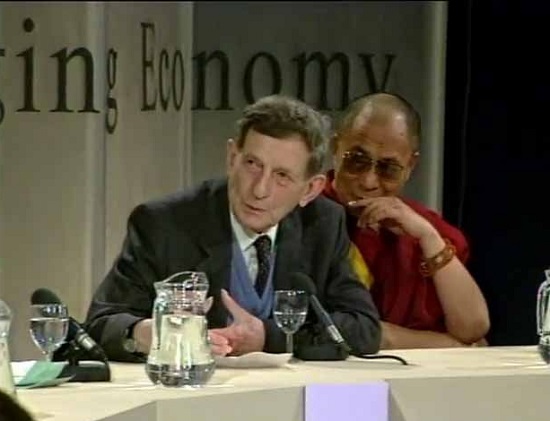
David Bohm, whose unique interpretation of quantum mechanics has been shunned for fifty years by most physicists, may now be back in favour thanks to a new experiment performed by Aephraim Steinberg of the University of Toronto.
While most Network members are no doubt more familiar with David Bohm’s philosophical writings or his writings on the Implicate Order, Bohm is better known among physicists for his theory of quantum trajectories. The standard, Copenhagen interpretation of quantum particles is that they behave either as waves or particles depending on how they are measured. When a photon travels from A to B, it does not take any definite path but exists only as a set of probabilities described by the Schrodinger Wave Equation. Bohm disputed this view and proposed that the photon is both a wave and a particle — the particle travels along a real trajectory on the back of a pilot wave. Its behaviour seems weird because we don’t know enough about its underlying reality.
Steinberg’s experiment confirms Bohm’s view that particles do follow real trajectories. However those trajectories can be discontinuous — termed, “surreal”. A photon can be observed passing through one path when it actually passes by another path. Steinberg’s experiment involved entangled photons of opposite polarization of which one partner was fired a set of double slits while the other remained outside. Entangled particles have the property that they are non-locally connected. When the polarization of one particle changed, so did the polarization of the partner. Instantly. Steinberg was able to show that the particles that passed through the double slits did indeed pass through one OR the other slit, but that the polarization kept changing as measured by the partner particle. This non-local effect due to the partner particle explains the puzzling surreal effect.
Does this experiment portend a changing view of quantum mechanics, one less statistical in favour of a more deterministic, albeit a non-local view? However the debate turns, it appears that David Bohm’s long neglected work is back in the laboratory!
